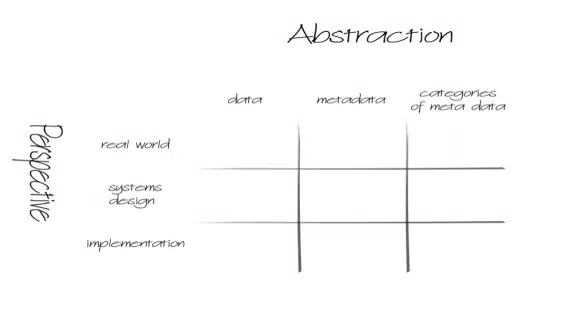Outlining three and a half ways that applications can have their schemas derived from enterprise ontologies.
Many people (ok, a few people) have asked us: “what is the relationship between an ontology and an application?” We usually say, “That’s an excellent question” (this is partly because it is, and partly because these ‘people’ are invariably our clients). Having avoided answering this for all this time we finally feel motivated to actually answer the question. It seems that there are three (ok three and a half) ways that ontologies are or can be related to applications. They are:
- Inspiration
- Transformation
- Extension
But, I fail to digress… Let’s go back to the ‘tic tac toe’ board. We call the following a ‘tic tac toe’ board, because it looks like one:

What it is attempting to convey is that there are levels of abstraction and differences in perspective that we should consider when we are
modeling. An application is in the lower middle cell.
Data models are in the middle square. Ontologies could be anywhere. An ontology is a formal way of representing a model. And so we could have an ontology that describes an application, an ontology of a logical model, even ontologies of data or meta meta data.
In our opinion the most interesting ontologies are in the middle top: these are ontologies that represent concepts independent of their implementation. This is where we find upper ontologies as well as enterprise ontologies.
Now some companies have built enterprise wide conceptual models. The IRS has one, with 30,000 attributes. But all the ones we’ve seen are not actually in the top center cell, they are logical models of quite wide scope. Ambitious and interesting, but not really conceptual models and typically far more complex than is useful. What we’ve found (and written about in other articles (ref the Elegance article)) is that a conceptual model can cover the same ground as a logical model with a small percentage of the total number of concepts. Not only are there fewer concepts in total, there are few concepts that need to be accepted and agreed to.
Want to Read More? Download the White-paper.
Written by Dave McComb

